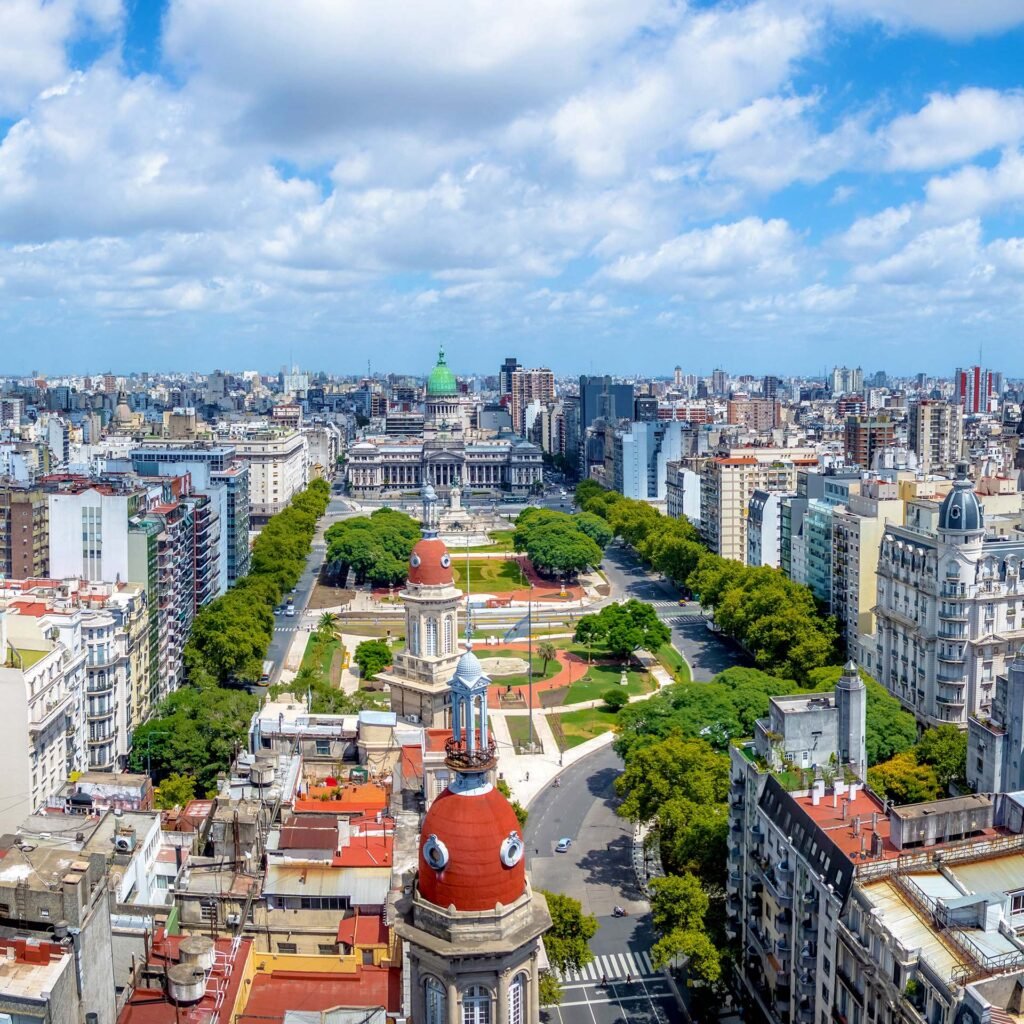Argentina is the eighth-largest country on Earth and, as a result, distances between destinations can be huge. For example, the drive between Buenos Aires and Ushuaia in Tierra del Fuego is more than 3000km (1864 miles).
Fortunately, you’ll find a wide range of transport options to get you around. Whether you choose bus, boat, train, plane, bike or car, plan your route with this guide to navigating your way around Argentina.
Buses are the best option for budget travelers in Argentina
Long-distance buses are the most popular and cost-effective way to travel around the country. Known as micros, they are generally modern, comfortable and reliable, with air-conditioning, toilets and reclining seats. Some even have wifi and USB ports.
Various classes of buses and seats are available, especially on popular inter-city routes, including partially reclining semi-cama (semi-sleeper), fully reclining cama (sleeper class) and bigger and more luxurious ejecutivo (executive) and “suite” buses. For long journeys, it’s worth going for the most expensive seat you can afford so you can get some rest as the miles roll by.
You can also expect an attendant serving hot meals, soft drinks and sometimes wine and beer (all of which are typically included in the fare). Many buses have TV screens showing films (often at great volume) and some even have bingo sessions with prizes. Good ear plugs, an eye mask and warm clothes for the often glacial air-conditioning are highly recommended.
Frequently there’s strong competition between companies on busier routes, so look out for promotions. Some bus stations – including Retiro, the main terminal in Buenos Aires – are in slightly shady areas, so keep your wits about you. More positively, many also have handy left-luggage services.
Hiring a car can help you get off the beaten track
Hiring a car gives you more freedom to explore independently and get off the beaten track, particularly in regions such as Patagonia, Tierra del Fuego and the northwest, and in Argentina’s spectacular national parks where public transport is limited or infrequent. Although the main highways across the country are usually in good condition, roads in many rural areas are unpaved and dotted with potholes.
Rental cars and gas are generally a bit more expensive than in North America or Europe – it’s worth going for an unlimited mileage deal when you rent. And if you’re planning to drive into a neighboring country, make sure this is covered by the rental agreement and your insurance (you’ll probably need to pay an additional fee).
Tourist trains are incredibly scenic
Argentina’s once extensive railway network is now sadly much diminished, with only a handful of long-distance lines still operating, but Buenos Aires has plenty of commuter services, with stations throughout the city, suburbs and surrounding province.
A handful of long-distance trains run to cities such as Mar del Plata, Rosario, Córdoba and Tucumán, and these tend to be cheaper, but slower and less frequent than buses. There are also regional lines in and around Córdoba, Salta and Neuquén, though again they aren’t particularly useful for travelers.
However, there are several popular tourist and heritage trains, including the Tren de la Costa (Train of the Coast), which runs from Buenos Aires to Tigre, the gateway to the Paraná delta, and the scenic Tren a las Nubes (Train to the Clouds) in the high-altitude northwest.
Many visitors take the scenic Tren Patagónico, which runs through the Lake District between Bariloche and Viedma and La Trochita (The Little Gauge), popularized by Paul Theroux’s classic book The Old Patagonian Express. Then there’s the Tren de Fin del Mundo (End of the World Train), the most southerly railway on Earth, in Tierra del Fuego.








